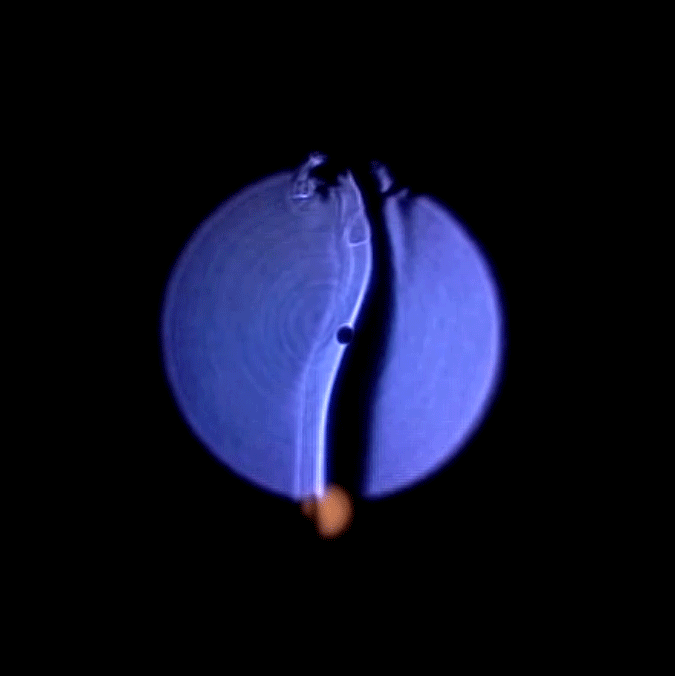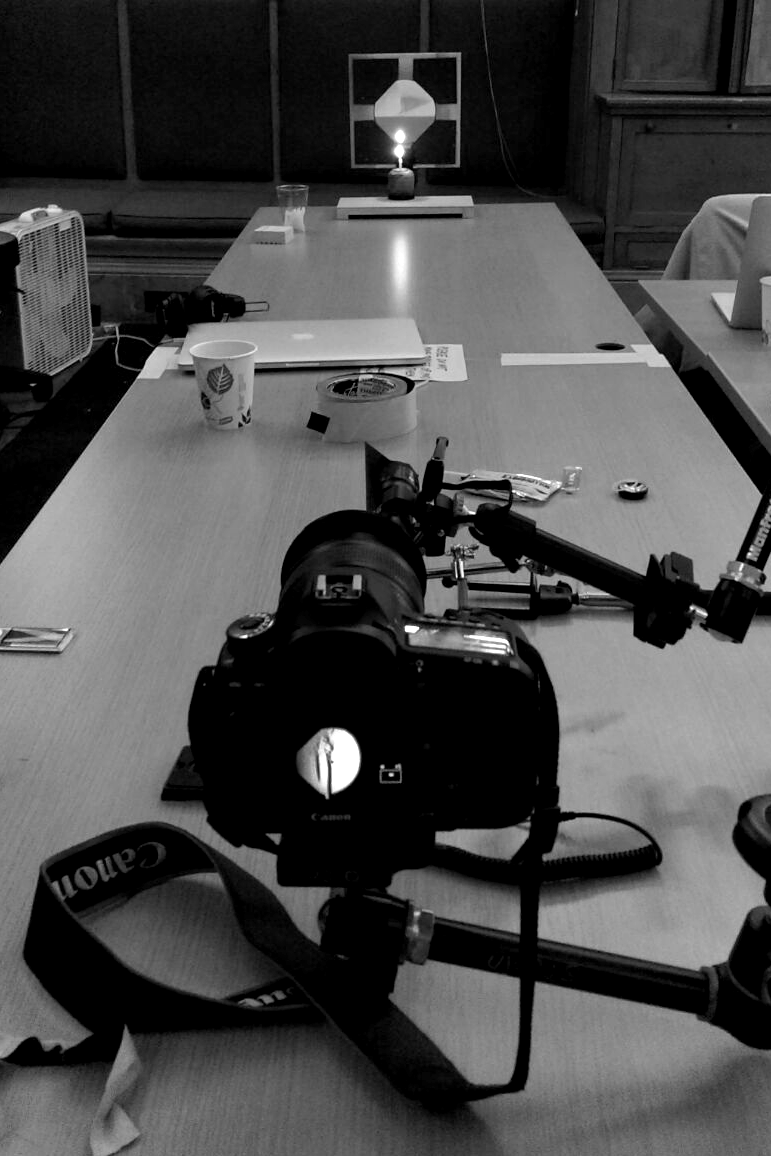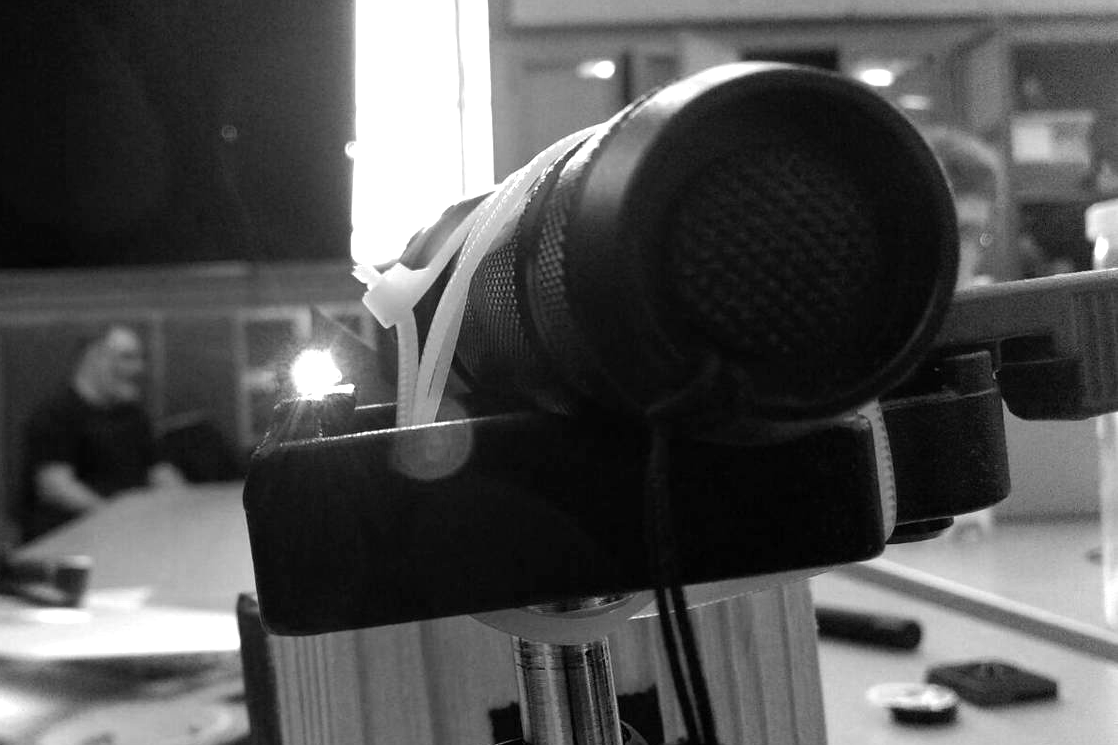Visualizing Sound:
Schlieren Imaging
Schlieren photography is a method used to visualize density variations in transparent media, or in this case, the differences in the index of air refraction. The imaging method was developed in 1864 to study supersonic motion and is now widely used in aeronautical engineering to photograph the flow of air around objects. With this method, I am attempting to visualize the invisible by using the pressure waves generated by sound. Many thanks to Golan Levin for his continuous help and support

CONCEPT
Through the use of metaphors, we manipulate the physical to talk about the abstract. What if the abstract had a physical form?
My background in neuroscience and cognition leads me to gravitate towards scientifically oriented processes to create work. By using the schlieren mirror I was hoping to visualize the invisible, sound, and the inevitable physicality that comes with it.
Gesaffelstein at 300fps.
Whiplash drum solo at 300fps.
HOW IT WORKS
A schlieren mirror is essentially a parabolic mirror without the glass layer over the silver coating. It provides a much more accurate reflection of the world because of the lack of light deviation between the air, the glass and the silver coating. By placing a small point light source at 2x the focal length of the mirror, you are able to create a refraction of the focal point at about 2 meters distance. The placement of a sharp object such as a razor blade, splitting the focal point in half, will prevent all bent light rays from entering the lens of your camera. It will also cast a shadow on your lens, revealing the slight deviations of light through different air densities.

PROCESS
The first step was to build a frame specifically optimized for the schlieren mirror, in order to hold it up with a clamp and keep it from vibrating. The frontal pieces of plywood were used instead of pine to maximize the amount of light refraction. The biggest difficulty in achieving this first step was building the frame without bringing the mirror into the wood shop (to avoid it getting dusty and damaged). It was a nice surprise to see that it fit perfectly inside its designed space (with a millimeter accuracy).
Process Sketch:

I then proceeded to building the whole setup, which was a lot more precise than expected. Each time anything was moved by even a millimeter, I needed to start over from scratch. I used subwoofer speakers to generate significant enough pressure waves by orienting the bass-ports towards the hot air generated by the candle. The next step towards my Experimental Capture capstone project will be achieving the depiction of speech, possibly by using a sheet of dry ice to generate a significant difference in air densities.
Documentaion Images:



And as a treat, here is my talented friend Conner Harden interacting with the schlieren mirror:
